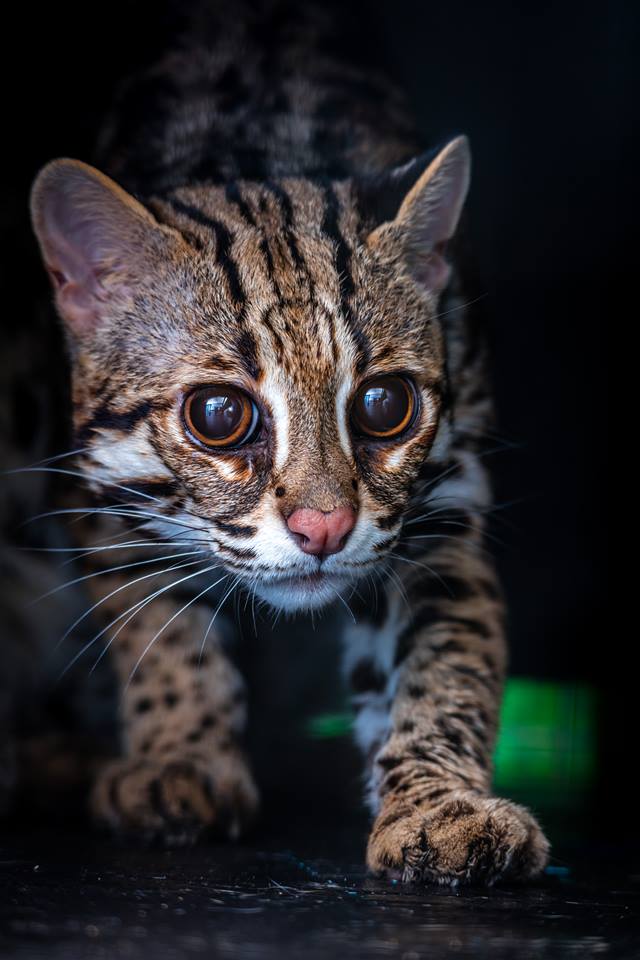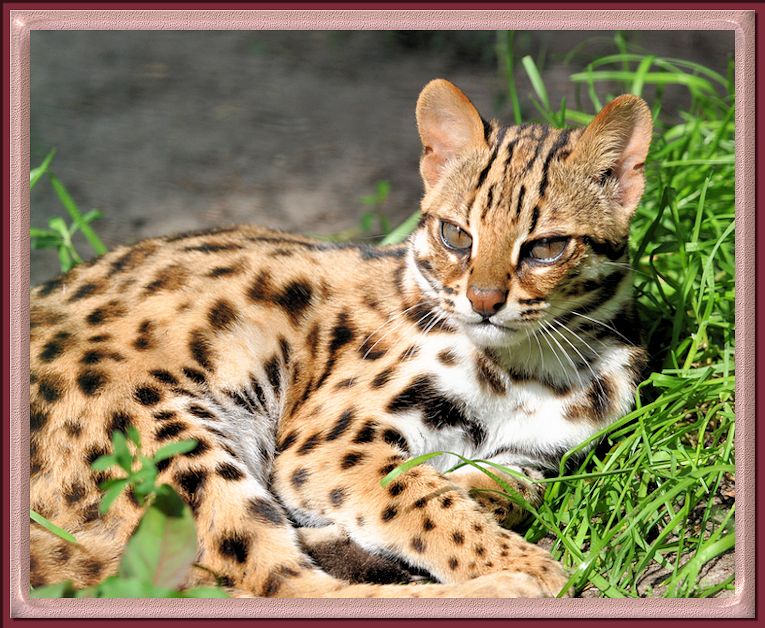The Asian Leopard Cat - A Small Wild Feline Found Across Asia
Imagine, if you will, a small wild cat, about the size of your average house cat, yet with the striking markings of a much larger, more powerful animal. This creature, so, is the Asian Leopard Cat, a truly remarkable animal that makes its home in an incredibly vast stretch of land. From the chilly far eastern reaches of Russia, across the Korean Peninsula, through the sprawling lands of China, and then down into the warmer climes of Indochina and India, this little feline is, apparently, everywhere. It is, in some respects, the most widely spread small wild cat in all of Asia, a true testament to its ability to make a living in many different places.
This amazing little hunter, you know, can be found in so many different kinds of natural settings. Whether it is the dense, green tropical forests that stay green all year round or other forest areas throughout places like Indonesia, the Philippines, Borneo, Malaysia, and Thailand, the Asian Leopard Cat seems to find a way to fit in. Its ability to adjust to various surroundings is, actually, quite something, allowing it to thrive where other animals might struggle. This wide reach really does make it one of Asia's most common wild cats, living in a surprising array of habitats.
There are, in fact, many fascinating things to learn about this creature, known to science as Prionailurus bengalensis. It is a wild feline admired for its striking good looks, its quick movements, and, perhaps most interestingly, its part in the story of the popular Bengal cat that many people keep as pets. We are going to, perhaps, look a little closer at what makes this small cat so special, from its varied appearance to the challenges it faces in the wild, giving you, you know, a clearer picture of its life.
Table of Contents
- Where Does the Asian Leopard Cat Actually Live?
- What Makes the Asian Leopard Cat So Good at Adapting?
- How Do We Recognize an Asian Leopard Cat?
- What is the Connection Between the Asian Leopard Cat and Bengal Cats?
- Are There Different Kinds of Asian Leopard Cats?
- The Challenges Facing the Asian Leopard Cat
- Protecting the Asian Leopard Cat for the Future
- Amazing Facts About the Asian Leopard Cat
Where Does the Asian Leopard Cat Actually Live?
This little wild cat, the Asian Leopard Cat, has, basically, one of the widest ranges of any feline species across the Asian continent. Its home stretches from the very northern parts, like the Amur region in the far east of Russia, all the way down through the Korean Peninsula. From there, it extends across the enormous landmass of China, then moves into the countries of Indochina, and continues further west into India. This means, you know, it can handle a truly incredible array of climates and environments, from places that get quite cold to those that are warm and humid all year long.
You can, in fact, find these cats making their homes in various forest settings. They are quite at home in the lowland tropical evergreen forests, which are dense and green year-round. But they also live in other types of wooded areas throughout a number of island nations and mainland regions, including Indonesia, the Philippines, Borneo, Malaysia, and Thailand. This wide distribution, you know, shows just how versatile these animals are, making them a common sight in many different natural spaces across Asia. It is, perhaps, one of the reasons they are so well-known.
What Makes the Asian Leopard Cat So Good at Adapting?
The Asian Leopard Cat is, essentially, an incredibly skilled hunter that can adjust to many different surroundings. They are about the same size as a typical house cat, which makes their ability to survive in such varied places even more interesting. They are, you know, the most common wild cat in Asia, and you can find them in almost every kind of forest environment, from the steamy lowlands to areas with more seasonal changes. This means they are very good at finding food and shelter, no matter where they happen to be living.
Their remarkable ability to adjust allows them to do well in all sorts of places. Whether it is thick jungle or more open woodlands, the Asian Leopard Cat seems to find a way to thrive. They are, in a way, generalists when it comes to their living spaces, meaning they do not need one very specific type of environment to survive. This flexibility, you know, is a big reason why they have managed to spread so widely across the continent, making them a truly successful species in many different natural areas.
How Do We Recognize an Asian Leopard Cat?
The Asian Leopard Cat, also known by its scientific name Prionailurus bengalensis, is a small wild cat that has very noticeable and graceful markings. These patterns, you know, are quite similar to those found on its much larger relative, the leopard, which is how it gets its common name. The fur color, the length of its tail, and even the shape of its skull can, actually, vary quite a bit depending on where the cat lives. This means that a cat from one part of Asia might look a little different from one found in another region, making them quite diverse.
Some of these cats might have a more golden or yellowish coat, while others could be more gray or brownish. The spots, too, can differ; some might have very clear, distinct spots, while others might have more faded or blended patterns. The length of their tails can also change, and even the way their heads are shaped can be a bit unique depending on their specific group. This variety, you know, is part of what makes studying the Asian Leopard Cat so interesting, showing how different populations have developed over time in their own specific areas.
What is the Connection Between the Asian Leopard Cat and Bengal Cats?
One of the most widely known facts about the Asian Leopard Cat is its direct link to the domestic Bengal cat breed. People who wanted to create a new type of house cat with a wild look crossed the Asian Leopard Cat with domestic cats. This led to the Bengal cat, which is now a very popular pet around the world. The stunning spots and patterns that Bengal cats have, you know, come directly from their wild Asian Leopard Cat ancestors, giving them that exotic appearance that many people find so appealing.
This connection means that if you see a Bengal cat, you are, in a way, looking at a creature that carries the physical traits of a wild Asian Leopard Cat. The beauty and agility that people admire in Bengal cats are, basically, inherited from their wild relatives. It is a pretty cool example of how wild animals can contribute to the world of pets, bringing a touch of the wild into our homes, though the Bengal cat is now, you know, fully domesticated after many generations.
Are There Different Kinds of Asian Leopard Cats?
Yes, there are, in fact, different types of Asian Leopard Cats, often referred to as subspecies. These various groups show quite a range in their physical characteristics. For instance, the color of their fur can be very different from one group to another. Some might have coats that are more on the reddish or yellowish side, while others might be more gray or even silvery. This variation, you know, helps them blend into their specific surroundings, whether it is a dry forest or a lush, green jungle.
Beyond just fur color, the length of their tails can also vary among these different groups. Some might have shorter tails, while others have tails that are a bit longer. Even the shape of their skulls can show slight differences, which scientists use to help tell these groups apart. These small but noticeable differences, you know, are a result of the cats adapting to their particular environments over many generations, making each group uniquely suited to its home area.
The Challenges Facing the Asian Leopard Cat
Sadly, the Asian Leopard Cat faces some serious threats, especially in the parts of its range where the weather changes with the seasons. They are, you know, heavily hunted for their fur, which is then sold in commercial markets. This trade puts a lot of pressure on their populations, making it harder for them to thrive in certain areas. It is a sad reality that these beautiful creatures are sought after for their skins, which are then turned into products for people.
Japan, for example, is, apparently, a very big consumer of cat fur in Asia, and the skins of Asian Leopard Cats are, actually, a primary choice for this market. This demand means that many of these cats are caught and killed, which can have a significant impact on their numbers in the wild. Protecting these animals from such persecution is, in fact, a very important step if we want to make sure they continue to exist across their natural homes for future generations to see and appreciate.
Protecting the Asian Leopard Cat for the Future
Given the various challenges that the Asian Leopard Cat encounters, particularly from the fur trade, efforts to protect these animals are, basically, very important. People are working to raise awareness about the value of these wild felines and the need to stop illegal hunting and trading. This involves, you know, educating people about the cat's role in the ecosystem and the beauty it adds to the natural world. It is, in a way, about making sure that these creatures can continue to live freely and safely in their own habitats.
Conservation groups and local governments are, in fact, often involved in trying to set up protected areas where these cats can live without fear of being hunted. They also work to enforce laws that make it illegal to trade in their fur. These efforts, you know, are about ensuring that the Asian Leopard Cat, with its incredible adaptability and widespread presence, remains a vibrant part of Asia's wildlife for a very long time to come, allowing future generations to marvel at these small, spotted hunters.
Amazing Facts About the Asian Leopard Cat
There are, you know, many truly amazing things about the Asian Leopard Cat that make it a fascinating creature to learn about. For one, its incredible ability to live in such a wide variety of environments, from cold Russian forests to hot Indonesian jungles, really sets it apart. This shows just how tough and resourceful these small cats can be when it comes to finding food and shelter, no matter the conditions. They are, in a way, nature's survivors.
Another interesting fact is their size; they are, basically, about the same size as a regular house cat. This often surprises people, as their name and markings suggest something much larger. Their beautiful, elegant spots, which are so similar to a full-sized leopard, are also quite remarkable. And of course, their direct connection to the popular Bengal cat breed is a very cool bit of information, showing how wild animals can influence our domestic pets, which is, perhaps, a pretty unique link.

Asian Leopard Cat (Prionailurus bengalensis) - Wild Cats Magazine

Asian Leopard Cats

Asian Leopard Cats | Auckland Bengal Cat Breeders New Zealand — Pride